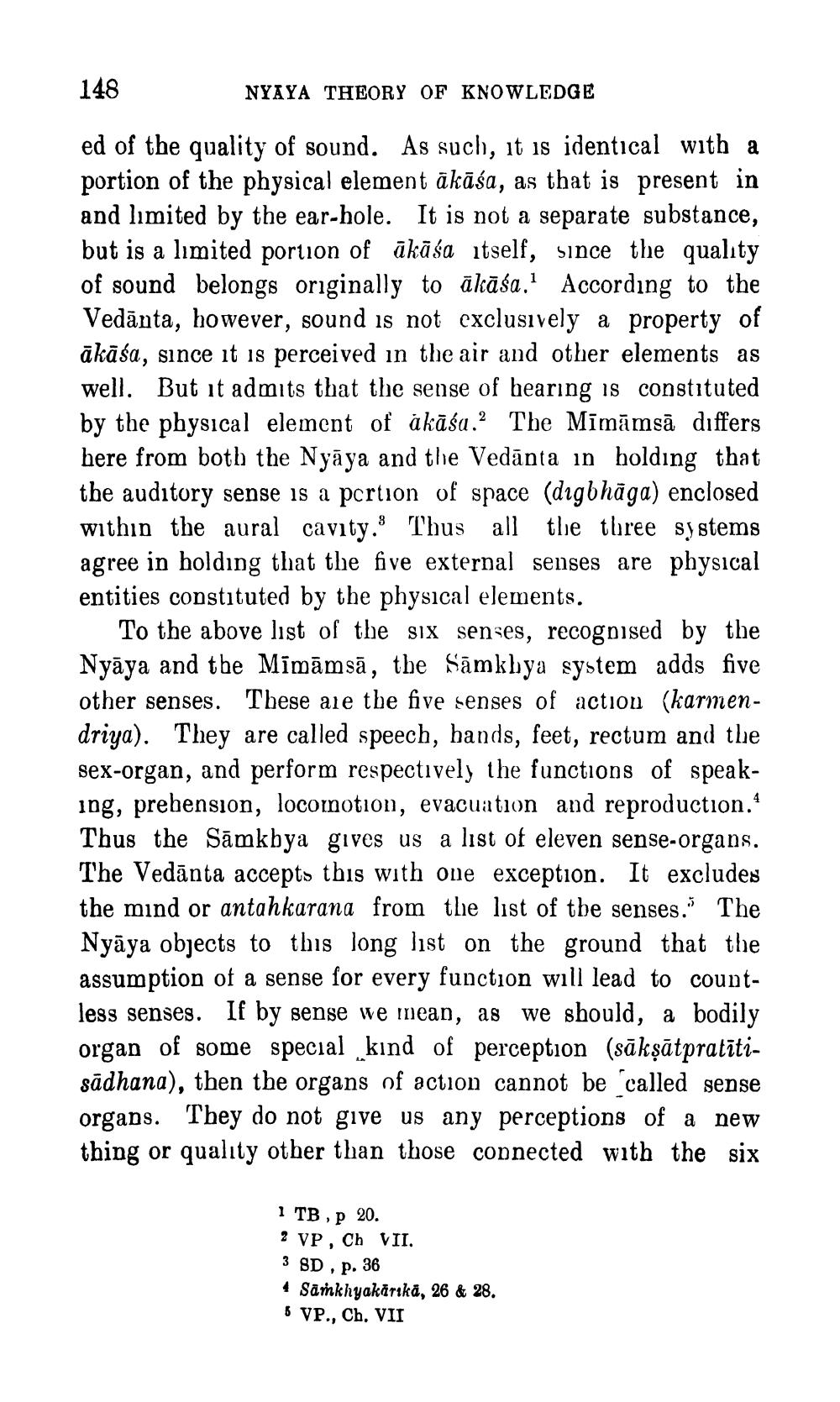________________
148
NYAYA THEORY OF KNOWLEDGE
ed of the quality of sound. As such, it is identical with a portion of the physical element ākāśa, as that is present in and limited by the ear-hole. It is not a separate substance, but is a limited portion of ākāśa itself, since the quality of sound belongs originally to ākāśa.' According to the Vedānta, however, sound is not exclusively a property of ākāśa, since it is perceived in the air and other elements as well. But it admits that the sense of hearing is constituted by the physical element of akāśu.The Mīmāmsā differs here from both the Nyāya and the Vedānta in holding that the auditory sense is a portion of space (digbhāga) enclosed within the aural cavity. Thus all the three systems agree in holding that the five external senses are physical entities constituted by the physical elements.
To the above list of the six senses, recognised by the Nyāya and the Mīmāmsā, the Sāmkhya system adds five other senses. These are the five senses of action (karmendriya). They are called speech, hands, feet, rectum and the sex-organ, and perform respectively the functions of speaking, prehension, locomotion, evacuation and reproduction. Thus the Sāmkbya gives us a list of eleven sense-organs. The Vedānta accepts this with one exception. It excludes the mind or antahkarana from the list of the senses. The Nyāya objects to this long list on the ground that the assumption of a sense for every function will lead to countless senses. If by sense we mean, as we should, a bodily organ of some special kind of perception (sākṣātpratītisādhana), then the organs of action cannot be called sense organs. They do not give us any perceptions of a new thing or quality other than those connected with the six
1 TB , P 20. 2 VP , Ch VII. 3 SD, p. 36 • Sankhyakärika, 26 & 28. OVP., Ch. VII




